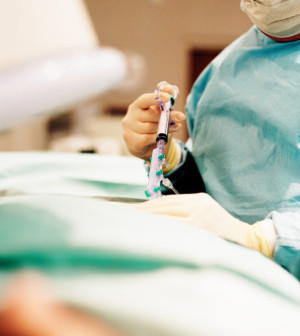- Strengthening Your Relationship: Practical Strategies
- Skip Storing This Everyday Product in the Fridge Door
- Green Tea + B3 Pairing May Boost Brain Health
- Navigating Your Midlife Crisis: Embracing New Possibilities
- City Raccoons Showing Signs of Domestication
- Mapping the Exposome: Science Broadens Focus to Environmental Disease Triggers
- One Week Less on Social Media Linked to Better Mental Health
- Your Brain Changes in Stages as You Age, Study Finds
- Some Suicide Victims Show No Typical Warning Signs, Study Finds
- ByHeart Formula Faces Lawsuits After Babies Sickened With Botulism
Some Women Face Geographic Barriers to Breast Reconstruction

Long distances to treatment centers are a significant obstacle for some women seeking breast reconstruction after a mastectomy, a new study finds.
“While greater patient awareness and insurance coverage have contributed to greater breast reconstruction rates in the United States, geographic barriers to access this service remain, particularly to academic centers,” wrote the study’s authors, led by Dr. Evan Matros from Memorial Sloan Kettering Cancer Center in New York City.
The researchers used the National Cancer Database to examine the association between breast reconstruction and the travel distance of more than 1 million American women who had a mastectomy between 1998 and 2011.
During this time period, the overall rate of immediate breast reconstruction jumped from about 11 percent to more than 32 percent, the investigators found.
The upward trend may reflect the Women’s Health and Cancer Rights Act of 1998, which requires insurance companies to pay for breast reconstruction after mastectomy, the researchers suggested. Implant-based reconstructions increased the most, but breast reconstructions involving patients’ own tissue also rose, the study found.
The researchers found that treatment travel distances for patients having breast reconstruction increased from 1998 to 2011, but the same was not true for women who didn’t have the surgery.
The findings were published in the January issue of Plastic and Reconstructive Surgery.
“Patients who underwent mastectomy with immediate reconstruction had to travel significantly greater distances than patients who did not undergo reconstruction,” the study authors wrote in a journal news release.
“The greater distance traveled by women undergoing breast reconstruction, as compared to mastectomy without reconstruction, suggests the presence of a geographic disparity,” they concluded.
Roughly 14 percent of the women who traveled less than 20 miles underwent reconstruction, compared to almost one-quarter of the women traveling between 100 and 200 miles, the study found.
Women treated at academic hospitals were most likely to undergo breast reconstruction. The study revealed 26 percent of these women had the procedure, compared to 20 percent treated at comprehensive community hospitals and 10 percent treated at community hospitals.
The average travel distance for women treated at both types of community hospitals was about 20 miles, but women treated at academic hospitals traveled an average of 47 miles, the researchers found.
Travel distance for women who underwent reconstruction with their own tissue at high-volume hospitals more than doubled over the study period to 53 miles. The study authors said this reflects the concentration of specialized centers in metropolitan areas.
The researchers suggested that more needs to be done to eliminate the barriers preventing women from accessing breast reconstruction after mastectomy. “Greater numbers of plastic surgeons, especially in community [hospitals], would be one method of addressing this inequality,” they wrote.
More information
The American Cancer Society has more about breast reconstruction after mastectomy.
Source: HealthDay
Copyright © 2025 HealthDay. All rights reserved.










